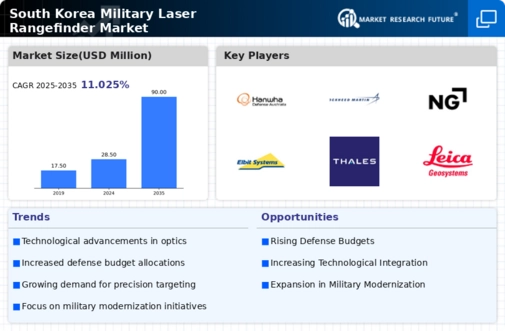The South Korea Military Laser Rangefinder Market represents a significant segment within the broader defense and military technology sector. The market is characterized by an increasing demand for precision targeting systems, enhanced situational awareness, and improved navigation capabilities for military operations. The competitive landscape is shaped by technological advancements, strategic partnerships, and the expansion of local as well as international players vying for market share.
With South Korea's commitment to modernizing its military capabilities amidst regional tensions, the laser rangefinder technology continues to evolve, presenting opportunities for innovation and competition among established players and new entrants.In the South Korea Military Laser Rangefinder Market, KAI holds a prominent position due to its strong domestic presence and extensive experience in defense systems. KAI's focus on research and development enables the company to introduce advanced laser rangefinder technologies tailored to meet the specific requirements of the South Korean military.
The company benefits from strong government support, including partnerships with various branches of the South Korean Armed Forces, which helps KAI to secure contracts and establish itself as a trusted provider. Additionally, KAI has invested in improving its manufacturing capabilities and optimizing existing products, further enhancing its competitive edge in this specialized sector.Raytheon Technologies presents a substantial presence in the South Korea Military Laser Rangefinder Market, leveraging its global expertise in defense systems to cater to local requirements.
The company offers a range of advanced military laser rangefinders that boast high accuracy and reliability, making them suitable for various defense applications. Raytheon's strengths lie in its innovative technology solutions, substantial resources for research and development, and robust supply chain capabilities. The company's established relationships with the South Korean military and defense contractors position it favorably in the local market. Additionally, Raytheon Technologies has made strategic acquisitions aimed at expanding its technological footprint and enhancing its product offerings in South Korea, enabling it to stay competitive in a rapidly changing market landscape.





















Leave a Comment